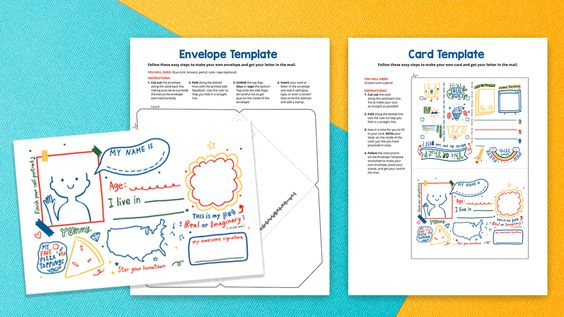In today’s fast-paced digital world, the art of writing friendly letters may seem old-fashioned, but it is still an essential skill that students should master. A friendly letter not only encourages genuine communication with friends and family but also aids in developing language, grammar, and creative skills among students. Our free kit will provide you with everything you need to help your students write a flawless and heartfelt friendly letter.
Why Teach Friendly Letters?
In our increasingly technology-driven society, it’s crucial to preserve and promote compassionate communication. In addition to fostering relationships, teaching students how to write a friendly letter has the following benefits:
- Enhances written communication skills
- Encourages expressive writing
- Builds social skills and empathy
- Helps students understand structure and organization in writing
Introducing the Free Friendly Letter Kit
Our free kit contains a wealth of resources designed to make teaching friendly letters as easy and engaging as possible.
1. Lesson Plan: Get started with a comprehensive lesson plan that outlines objectives, materials needed, step-by-step instructions, and evaluation methods.
2. Instructional Slides: Grab your students’ attention with visually appealing slides that explain the parts of a friendly letter, provide examples, and offer tips for effective writing.
3. Practice Worksheets: Reinforce understanding through practice worksheets featuring sample letters and prompts for students to write their own letters.
4. Peer Review Checklist: Teach your students the importance of peer review using our easy-to-follow checklist that covers essential elements of a well-written friendly letter.
5. Grading Rubric: Simplify assessment with our grading rubric to provide structured feedback on student performance.
6. Printable Templates: Inspire creativity with printable templates featuring various themes like holidays or special occasions for students to use when drafting their own letters.
Incorporating the Friendly Letter Kit into Your Classroom
The free friendly letter kit can be easily integrated into any curriculum and adapted according to the students’ age, skill level, or interests. Here’s how to make the most of our friendly letter kit in your classroom:
- Begin by discussing the importance of writing friendly letters and the benefits they provide.
- Introduce the instructional slides and guide your students through the parts of a friendly letter and writing tips.
- Distribute the practice worksheets for hands-on learning experience and let your students draft their own letters based on the prompts provided.
- Encourage peer review by facilitating pair or group discussion using our checklist, allowing students to analyze and improve each other’s work.
- Assess student performance using our grading rubric and providing insightful feedback.
- Allow students to choose from printable templates for drafting their final drafts, engaging creativity alongside the writing process.
Writing friendly letters is an essential life skill that benefits students beyond their academic careers. Our free friendly letter kit provides you with all the necessary resources to teach this crucial skill effectively while making it a fun and engaging experience for your students. Download our kit today and watch your students grow as effective communicators and empathetic writers!











